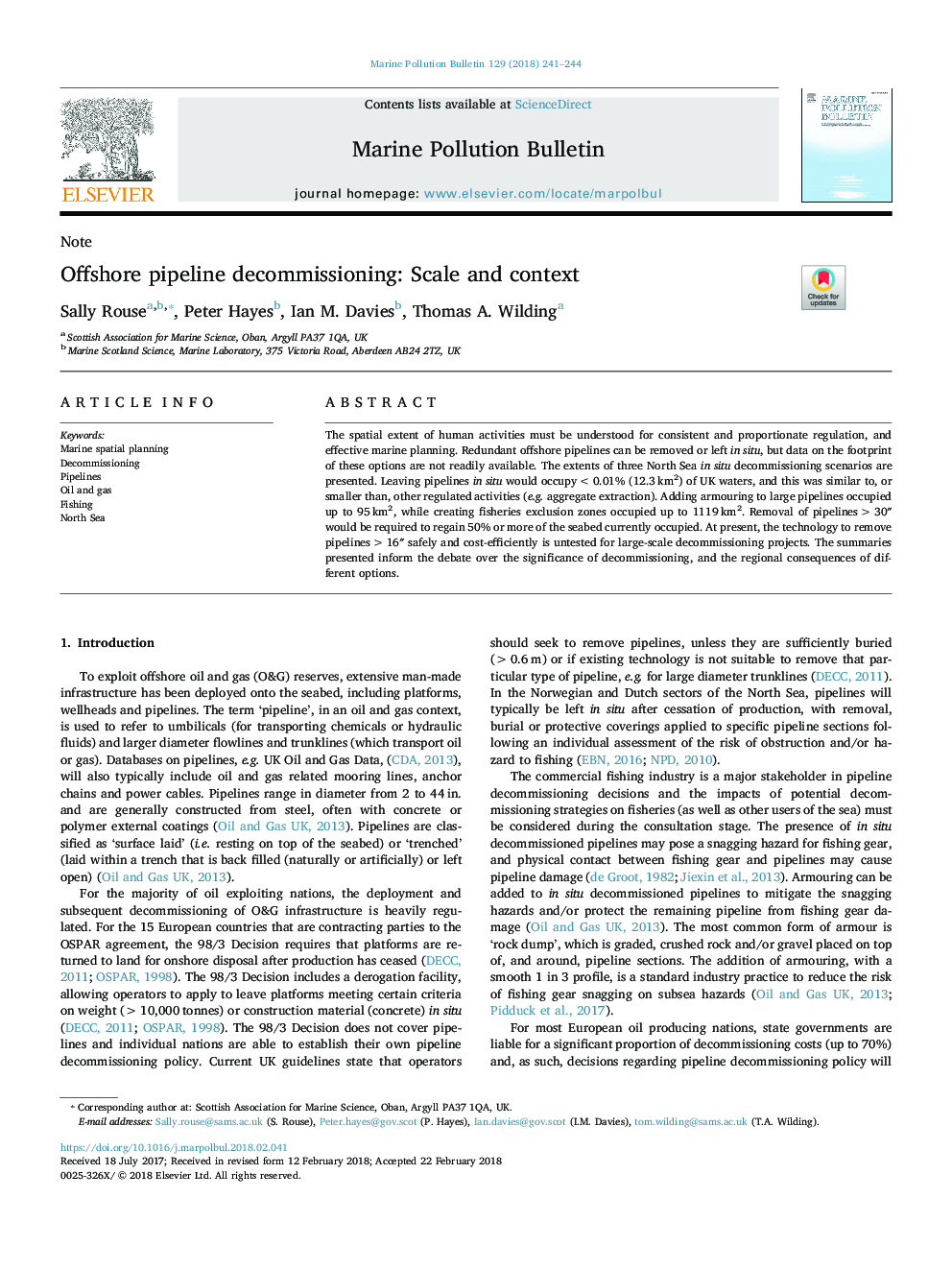| Article ID | Journal | Published Year | Pages | File Type |
|---|---|---|---|---|
| 8871507 | Marine Pollution Bulletin | 2018 | 4 Pages |
Abstract
The spatial extent of human activities must be understood for consistent and proportionate regulation, and effective marine planning. Redundant offshore pipelines can be removed or left in situ, but data on the footprint of these options are not readily available. The extents of three North Sea in situ decommissioning scenarios are presented. Leaving pipelines in situ would occupy <0.01% (12.3â¯km2) of UK waters, and this was similar to, or smaller than, other regulated activities (e.g. aggregate extraction). Adding armouring to large pipelines occupied up to 95â¯km2, while creating fisheries exclusion zones occupied up to 1119â¯km2. Removal of pipelines >30â³ would be required to regain 50% or more of the seabed currently occupied. At present, the technology to remove pipelines >16â³ safely and cost-efficiently is untested for large-scale decommissioning projects. The summaries presented inform the debate over the significance of decommissioning, and the regional consequences of different options.
Related Topics
Physical Sciences and Engineering
Earth and Planetary Sciences
Oceanography
Authors
Sally Rouse, Peter Hayes, Ian M. Davies, Thomas A. Wilding,
